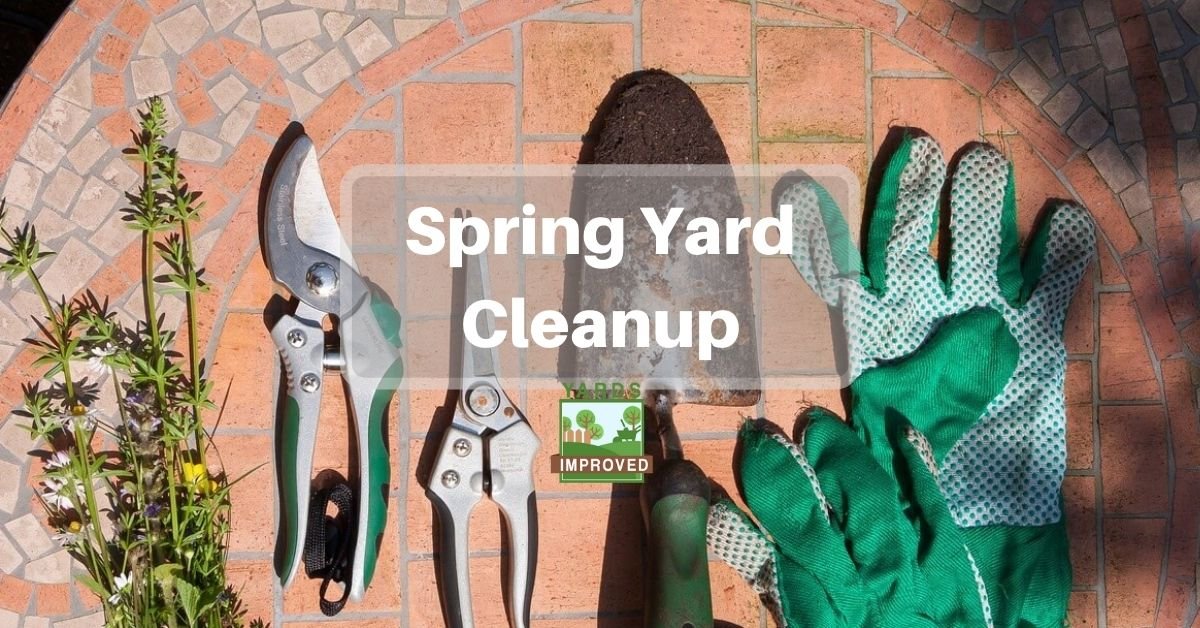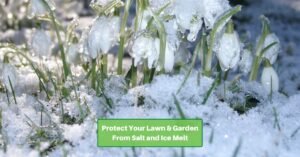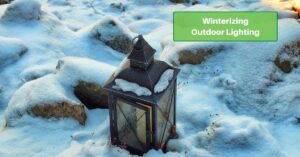Once the snow’s melted and new life begins to spring forth in your yard, it’s time to think about a good outdoor spring cleaning. Over the colder months, lawns and gardens mostly remain dormant. They might need a bit of help waking up so they can look fantastic over the next part of the year. There’s a lot to do, but it’ll pay off with a wonderful-looking property! So let’s dive right in and look at the areas to focus on this spring.
Tools for Spring Yard Work
We always believe it’s best to get your tools organized before starting any project. With spring yard work, you might divide your work over several days (or weekends). If that’s the case, you can group the tools into packages for each part of the project. Making sure you have everything you’ll need, though, will make the work go more smoothly. It might also save you a few trips to the store!
Before getting into the tools for the job, though, let’s look at some safety equipment. Remember that you want to stay in good shape to enjoy all the great weather that’s coming up! Using the right equipment to protect yourself will keep you in good shape.
Here’s what you should have to make your yard work go more smoothly:
- Work gloves – protect your hands from splinters and blisters!
- Knee pads – you may be pulling early weeds and starting garden work.
- Sunscreen – even while the weather is still cool, exposure to the sun presents a danger to the skin
- Wide-brimmed hat – further protect your face as well as the back of your neck from the sun with a hat that shades both.
- Appropriate footwear – odds are, the lawn is going to be wet and maybe even muddy. You may also be using heavy tools that you don’t want to accidentally jab into your toes. Don’t use shoes or sneakers that you don’t want to get dirty; preferably choose a decent pair of work boots that will keep your feet dry, safe, and comfortable.
- Eye protection – goggles or other protective eyewear can protect you while mowing, trimming, and performing other activities that can lead to flying particles.
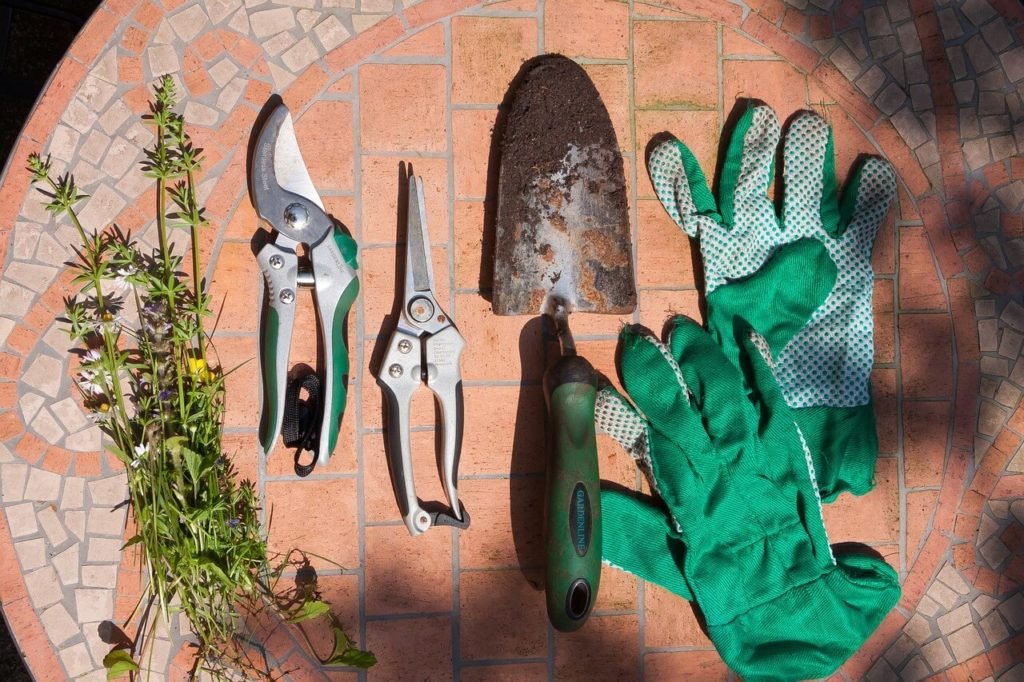
Once you have the proper material to wear and keep you safe, you’ll want to gather up the actual tools you’ll be using for your spring cleaning. Here’s a basic list, although you might also find more items to use in your circumstances.
- Lawnmower – before starting the season, you should also make sure the lawnmower blade is sharp!
- Edger – create clean edges around flower beds, along driveways and sidewalks, and more
- Trimmer – get that grass that sits just at the edge of walls or other areas that lawn mowers can’t reach
- Rake – actually both a leaf rake and a garden rake may come in handy. The former can help with stray leaves and litter. The latter is great for breaking up clumps of dirt in the lawn or garden.
- Large lawn and leaf bags – we recommend a compost pile. But if that’s not possible or if you have too much to get rid of, you’ll need someplace to put the excess organic material. You can opt for reusable ones, too.
- Pruners and lopper – these cutting tools – in short-handled and long-handled varieties – will help you get rid of broken or dead branches
- Garden Spade – you’ll want to start turning over soil in your garden early. A spade will also help you recreate the crisp edges between garden and lawn. This helps it look great while also slowing the spread of grass and weeds into the garden area.
- Push Broom – a sturdy push broom is just what you’ll need to clean off sidewalks, patios, steps, decks, and walkways.
- Pressure Washer – after you’ve swept up, a pressure washer can help remove dirt from corners or that’s become stuck to walls and doors.
Going About the Spring Yard Work
Once you have your tools ready, it’s time to get started! We’ve tried to break the chores down into manageable parts because it’s usually going to take a couple days to get everything done. We’ve also put everything in an order that works – at least for us. We go “top to bottom” so that we only have to do one round of cleaning up. It seems to save work by removing repetition. No system is perfect, but this one does seem to help save time.
Prune And Trim Trees And Bushes
Start high with your trees and bushes so that broken branches and the odd clump of leaves will fall to the ground where you’ll pick them up later. Pruning trees is normally done in the fall, but if you find dead or broken branches in spring, remove them.
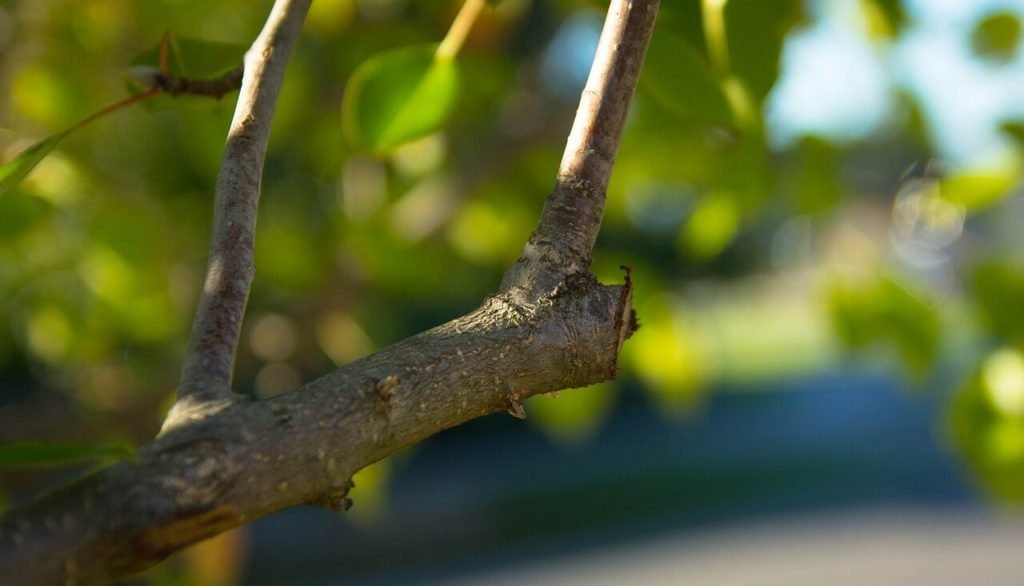
It can be difficult to identify dead branches early in the year since they may not have had time to produce new buds. However, if there are broken branches or ones that are obviously dead, remove them. Winter winds and snow may have broken them off completely but they’re still stuck in the bush or tree. If not, you might have to use a lopper or even a pruning saw, if they are larger pieces.
Check our tips for cleaning your garden tools, too!
Clean And Inspect Wooden Decks And Railings
The next step is to work on your deck and porch. Remember, our idea is to start high and move down so that you won’t be knocking stuff down to areas you’ve already cleaned.
A push broom will help you clear the majority of any debris that accumulated over winter. You might also find yourself clearing out spider webs or cobwebs in corners.
After you’ve gotten the most obvious debris down, you might find that there’s still a lot of dirt and dust. A pressure washer is a huge help here. Before starting it, though, make sure your doors and windows are closed! Spray down the whole area. Be sure to use the pressurized water to clean out the cracks between the planks as well as under the top and bottoms of railings.
As you work, look out for any nails or screws that may have worked loose or for any planks that are damaged. You might only need a hammer or screwdriver, but for more serious damage, it might be time to replace some of the boards.
Clean And Inspect Patios, Walkways And More
Next, follow the same procedure with your patios, sidewalks, and other hard surfaces. First, sweep them down thoroughly. After that, a good pressure washing can really clean them up.
Keep an eye out for cracks or chips that may have developed over winter. Water may have seeped into barely-noticeable fractures and frozen. That can lead to expanding damage. Also, plowing or shoveling may have scratched the surface or even chipped out a piece.
Many surfaces – including concrete – need to be resealed every one to three years. If it looks like you have issues with water seeping into your concrete, arrange for resealing as soon as possible. And check your records to see when was the last time it was done – it’s always better to get it done before you notice the damage!
Clean Up Debris
Once you’ve gotten everything down, it’s time to tackle all the waste and debris.
Of course, if it’s going to take several blocks of time to get all the work done, you might remove larger items like tree branches as you deal with those steps. Also, if litter finds its way to your yard, clean up as soon as possible to prevent it from continuing to make its way through the neighborhood.
However, to get rid of leftover leaves, twigs, and the like, you can wait until everything else is done. Use a leaf rake to gather everything together then add it to your compost heap or stuff it in leaf bags to be properly disposed of later.
Mow And Rake The Grass
Once the grass starts growing, it’s time for the first mowing of the season. Remember that you don’t want it too short; the proper length depends on the type of grass you have, though.
Since the grass has been dormant all winter, you probably won’t have to mow right away. Allow it to start to rebound and gain strength. It will also likely be matted down, especially if it snowed.
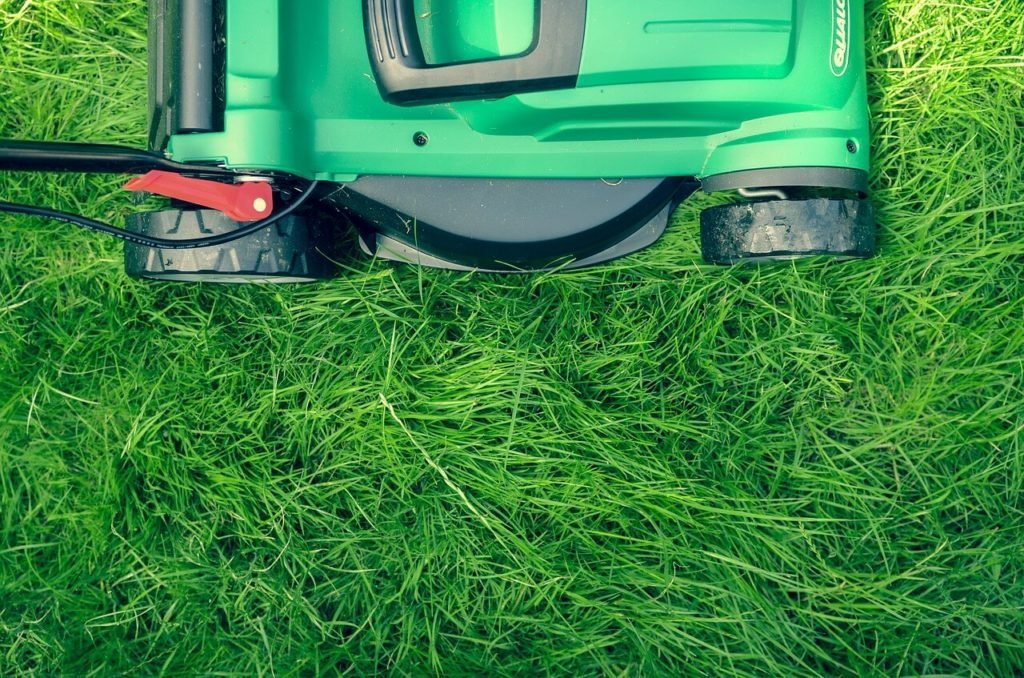
You can leave the cuttings to fertilize the lawn or rake them up. Be on the lookout for bare or thin spots so you can fill them in with new seed.
Spring is also prime time to fertilize the lawn. Again, the exact part of spring depends on your type of grass and your local climate.
Prepare The Garden Bed
Our last step would be to start working in the garden. It may be a bit easier now that everything else is cleaned up so it can’t interfere with this space.
You’ll want to remove mulch so that you can see better what’s going on underneath. Pull up any dead plants as well.
If any plants are alive but have been pulled a bit out of the soil, set them more firmly.
Fertilize your plant bed now, too.
The first seeds and bulbs may go in at this time, but of course, each has its own season.
Once all else is set, you can apply a new layer of mulch.
Conclusion
Once spring rolls around, it’s time to start sprucing up the yard again. Gather your tools and get to work. Whether it takes a day or a couple days, starting early will help your lawn and garden prosper. It may take some effort, but it definitely pays off!

